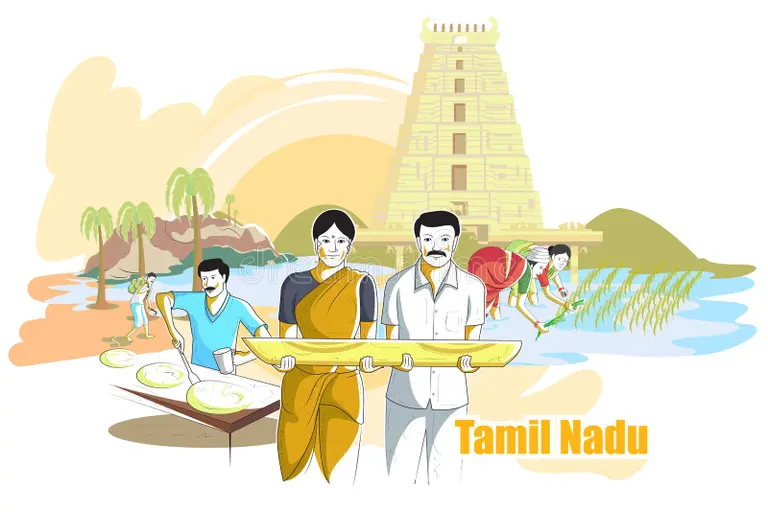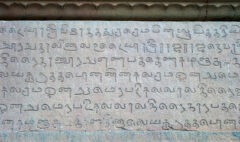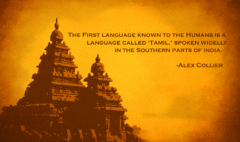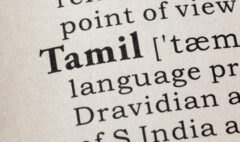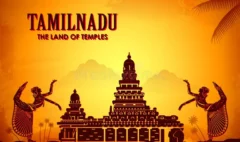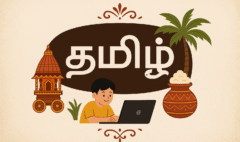Tamil Vocabulary for the Computer and Technology
Tamil Vocabulary for the Computer and Technology
The Digital Dialect: A Guide to Tamil Vocabulary for the Computer and Technology
In the 21st century, the language of technology is the language of modern life. We live in a world of computers, smartphones, and the internet, and the vocabulary of this digital world is an essential part of our daily communication. For a classical language like Tamil, the technological revolution of the past few decades has presented a unique and exciting challenge: how to adapt and evolve to accurately describe a world of software, hardware, and the internet. The result has been the development of a dynamic and growing body of tech vocabulary in Tamil. While many English technical terms are commonly used in everyday speech, there has also been a concerted effort by scholars, governments, and the tech community to create pure Tamil equivalents, a field known as Tamil for IT. For the modern language learner, mastering this vocabulary is crucial for being able to discuss current events, navigate the digital world, and even for professional communication in the booming tech sector of Tamil Nadu. This guide will serve as your essential lexicon for the digital age, introducing you to common computer words in Tamil and essential technology phrases in Tamil.
The Two-Pronged Approach: Borrowing and Creation
The development of tech vocabulary in Tamil has followed two main paths.
- Borrowing from English: This is the most common approach in casual, spoken Tamil. For the sake of speed and convenience, English technical terms are simply adopted and pronounced with a Tamil accent. Words like “computer,” “mouse,” “keyboard,” “internet,” and “software” are universally used and understood in everyday conversation.
- Creation of Pure Tamil Words (தனித்தமிழ்ச் சொற்கள் – Thanithamizh Sorkkal): This is the more formal and scholarly approach. Linguists and government bodies, particularly in Tamil Nadu and Sri Lanka, have worked to create new Tamil words for technical concepts by using Tamil root words. For example, “computer” becomes “கணினி” (kanini). These pure Tamil words are used in formal writing, government documents, news articles, and education. A proficient learner should be familiar with both the common English loanword and the formal Tamil equivalent.
This guide will provide you with both where applicable.
Hardware and Devices (வன்பொருள் மற்றும் சாதனங்கள் – Vanporul matrum Saadhanangal)
Let’s start with the physical components of our digital world.
- Computer: கணினி (Kanini) or the common “கம்ப்யூட்டர்” (kampyūttar)
- Laptop: மடிக்கணினி (Madikkanini) – Literally “lap computer.”
- Smartphone: திறன்பேசி (Thiranpesi) – Literally “smart phone.” The English word “ஸ்மார்ட்போன்” (smartphōn) is also very common.
- Keyboard: விசைப்பலகை (Visaippalagai) – Literally “key board.” The English “கீபோர்டு” (keebōrd) is more common in speech.
- Mouse: சுட்டி (Sutti) – Literally “that which points.” The English “மவுஸ்” (mavus) is more common.
- Screen / Monitor: திரை (Thirai)
- Printer: அச்சுப்பொறி (Achuppori) – Literally “printing machine.”
* Speaker: ஒலிபெருக்கி (Oliperukki) – Literally “sound amplifier.”
* Pen Drive: The term “பென் டிரைவ்” (pen draiv) is used.
* Charger: The term “சார்ஜர்” (saarjar) is used.
Software and the Internet (மென்பொருள் மற்றும் இணையம் – Menporul matrum Inaiyam)
Now let’s move into the world of software and the vast network that connects us all.
- Software: மென்பொருள் (Menporul) – Literally “soft-ware.”
- Application / App: செயலி (Seyali) – Literally “that which acts/does.” The English “ஆப்” (aap) is very common.
* Internet: இணையம் (Inaiyam)
* Website: இணையதளம் (Inaiyathalam) – Literally “internet place.”
* Link / URL: இணைப்பு (Inaippu) or சுட்டி (sutti)
* Email: மின்னஞ்சல் (Minnanjal) – Literally “electric mail.”
* Message: செய்தி (Seidhi)
* File: கோப்பு (Koppu)
* Folder: கோப்புறை (Koppurai)
* Download: பதிவிறக்கம் (Pathivirakkam)
* Upload: பதிவேற்றம் (Pathiyetram)
* Password: கடவுச்சொல் (Kadavuchchol) – Literally “pass word.”
* Username: பயனர் பெயர் (Payanar peyar)
* Search: தேடல் (Thedal)
* Wi-Fi: The term “வைஃபை” (vai-fai) is used.
The Language of Action: Common Tech Verbs and Phrases
Here are the phrases you need to talk about using technology.
- To turn on: ஆன் செய் (Aan sei) or ஆன் பண்ணு (Aan pannu) – “கம்ப்யூட்டரை ஆன் பண்ணு.” (Computer-ai aan pannu.) – “Turn on the computer.”
- To turn off: ஆஃப் செய் (Aaf sei) or ஆஃப் பண்ணு (Aaf pannu)
- To open: திற (Thira) – “அந்தக் கோப்பைத் திறக்கவும்.” (Andha-k koppai-th thirakkavum.) – “Please open that file.”
- To close: மூடு (Moodu)
- To save: சேமி (Semi) – “இந்தக் கோப்பைச் சேமிக்கவும்.” (Indha-k koppai-ch semikkavum.) – “Please save this file.”
- To delete: அழி (Azhi) or the English “டெலிட் பண்ணு” (Delete pannu).
- To type: தட்டச்சு செய் (Thattachu sei) – “நான் ஒரு மின்னஞ்சல் தட்டச்சு செய்கிறேன்.” (Naan oru minnanjal thattachu seigiren.) – “I am typing an email.”
- To click: கிளிக் செய் (Click sei) or கிளிக் பண்ணு (Click pannu).
- To connect to the internet: “இணையத்தில் இணைக்கவும்.” (Inaiyathil inaikkavum.)
- “The internet is not working.”: “இணையம் வேலை செய்யவில்லை.” (Inaiyam velai seiyavillai.) or “நெட் வேலை செய்யல.” (Net velai seiyala.) in spoken Tamil.
* “Please send me the link.”: “எனக்கு அந்த லிங்க்கை அனுப்பவும்.” (Enakku andha link-ai anuppavum.)
* “I will download the file.”: “நான் அந்தக் கோப்பைப் பதிவிறக்கம் செய்வேன்.” (Naan andha-k koppai-p pathivirakkam seiven.)
* “What is the Wi-Fi password?”: “வைஃபை கடவுச்சொல் என்ன?” (Wi-Fi kadavuchchol enna?)
* “My phone battery is low.”: “என் போன் பேட்டரி குறைவாக உள்ளது.” (En pon battery kuraivaaga ulladhu.)
Social Media Vocabulary (சமூக ஊடகங்கள் – Samuga Oodagangal)
Social media is a huge part of the digital landscape.
- Post: பதிவு (Padhivu)
- To post: பதிவு செய் (Padhivu sei)
- Like: The English word “லைக்” (laik) is used. “என் போட்டோவை லைக் பண்ணுங்க.” (En photo-vai laik pannunga.) – “Please like my photo.”
- Comment: The English word “கமெண்ட்” (kament) is used.
- Share: The English word “ஷேர்” (shaer) is used.
- Video Call: The term “வீடியோ கால்” (veediyo kaal) is used.
Conclusion: An Ancient Language Embraces the Future
The world of Tamil for IT is a perfect example of how an ancient language can adapt, evolve, and thrive in the modern world. The ongoing creation and adoption of a sophisticated tech vocabulary ensures that Tamil remains a relevant and vibrant language for communication in all aspects of contemporary life. For the language learner, this vocabulary is a key to unlocking the modern world. It is the language you need to read online news, to interact on social media, to work in a modern office, and to simply navigate your daily digital life. Start by learning the most common terms for the devices you use every day. Pay attention to the language used on Tamil websites and in apps. You will find that this digital dialect is a fascinating and essential part of the living, breathing, and ever-evolving Tamil language.

